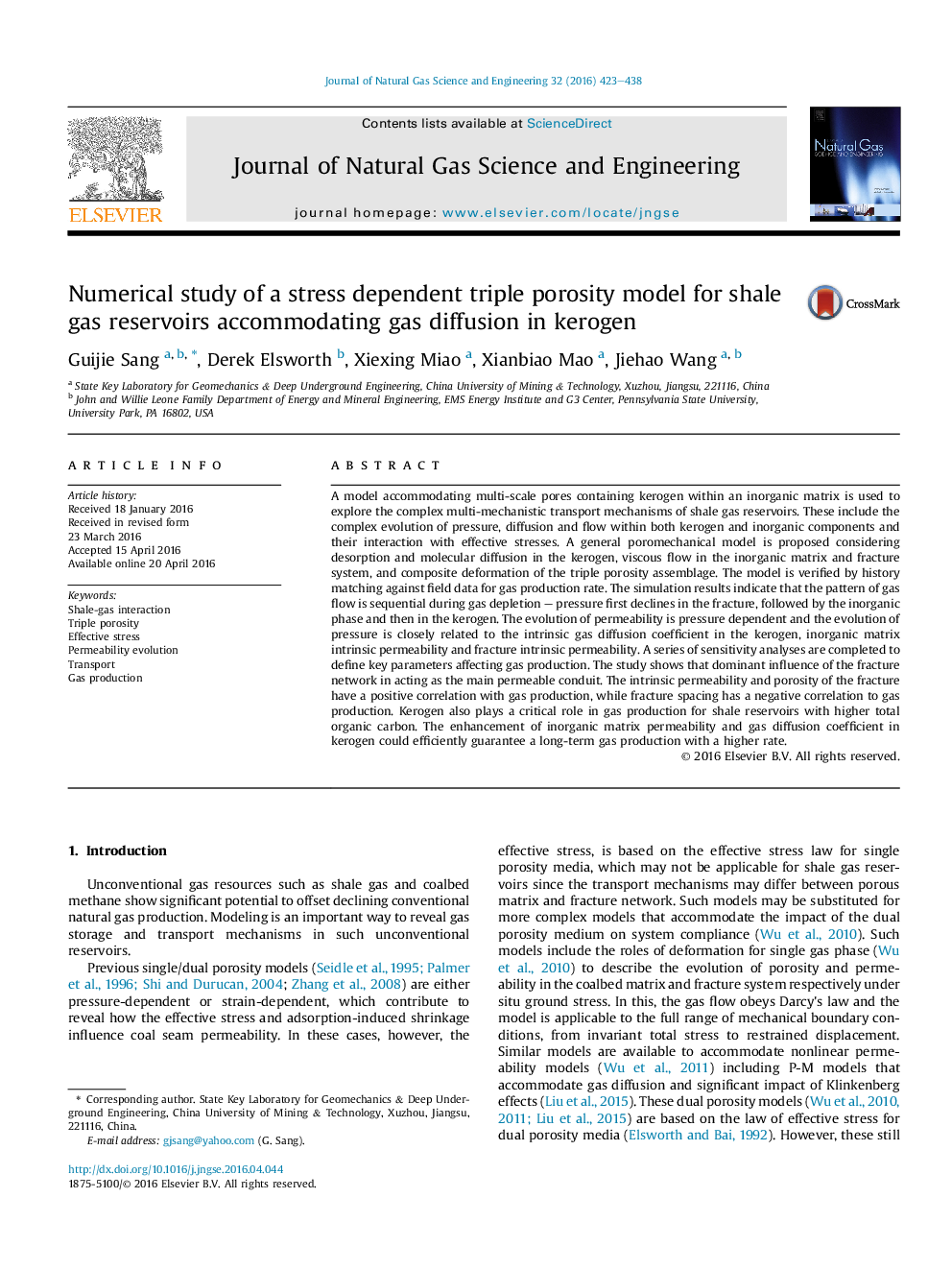| Article ID | Journal | Published Year | Pages | File Type |
|---|---|---|---|---|
| 1757244 | Journal of Natural Gas Science and Engineering | 2016 | 16 Pages |
•A triple porosity model is proposed considering desorption and molecular diffusion in the kerogen.•The model is verified by history matching against field data for gas production rate.•The pattern of gas flow in the triple porosity media is systematically evaluated.
A model accommodating multi-scale pores containing kerogen within an inorganic matrix is used to explore the complex multi-mechanistic transport mechanisms of shale gas reservoirs. These include the complex evolution of pressure, diffusion and flow within both kerogen and inorganic components and their interaction with effective stresses. A general poromechanical model is proposed considering desorption and molecular diffusion in the kerogen, viscous flow in the inorganic matrix and fracture system, and composite deformation of the triple porosity assemblage. The model is verified by history matching against field data for gas production rate. The simulation results indicate that the pattern of gas flow is sequential during gas depletion – pressure first declines in the fracture, followed by the inorganic phase and then in the kerogen. The evolution of permeability is pressure dependent and the evolution of pressure is closely related to the intrinsic gas diffusion coefficient in the kerogen, inorganic matrix intrinsic permeability and fracture intrinsic permeability. A series of sensitivity analyses are completed to define key parameters affecting gas production. The study shows that dominant influence of the fracture network in acting as the main permeable conduit. The intrinsic permeability and porosity of the fracture have a positive correlation with gas production, while fracture spacing has a negative correlation to gas production. Kerogen also plays a critical role in gas production for shale reservoirs with higher total organic carbon. The enhancement of inorganic matrix permeability and gas diffusion coefficient in kerogen could efficiently guarantee a long-term gas production with a higher rate.
